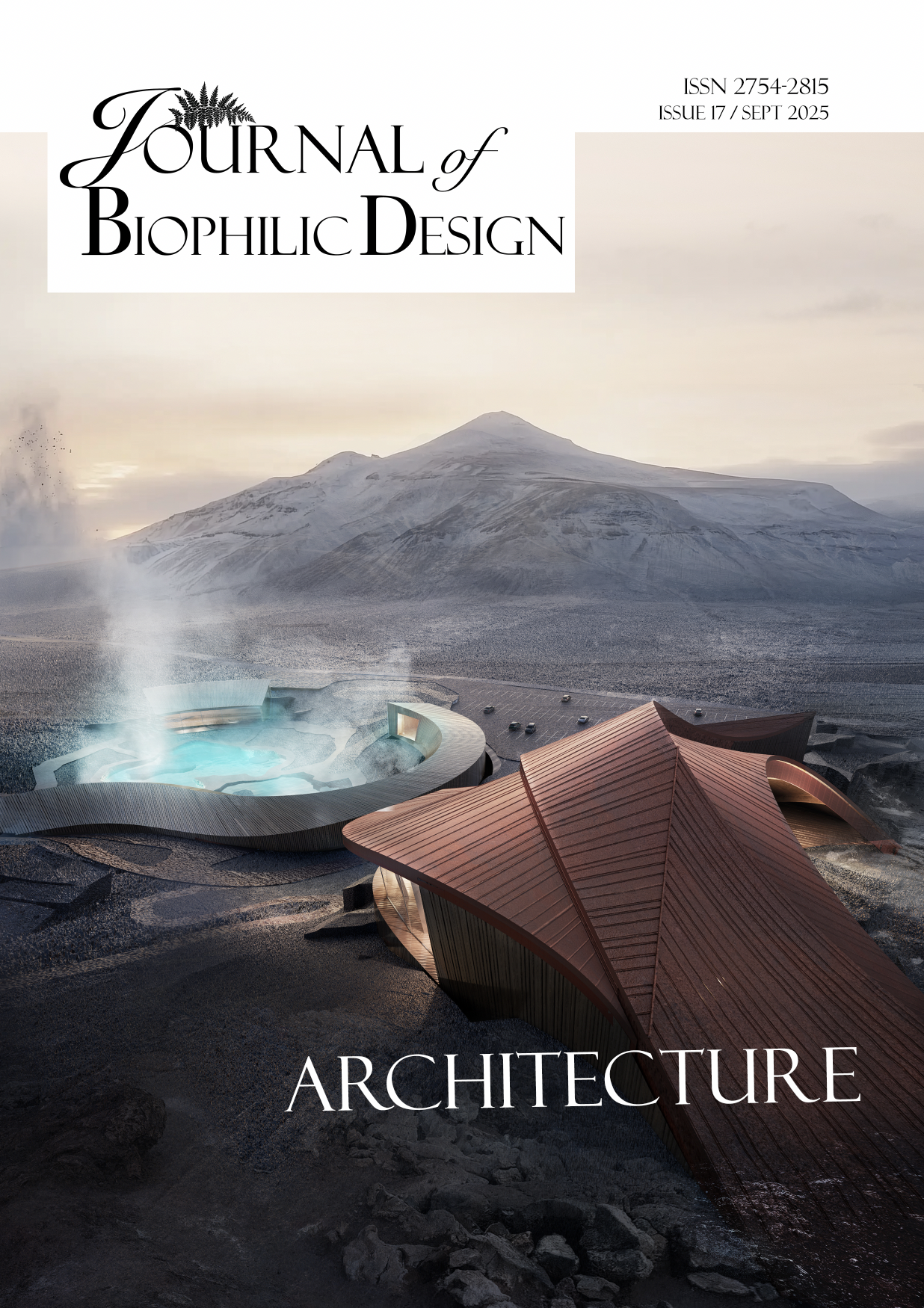Journal of Biophilic Design - Issue 3 - Heathcare - PAPERBACK PRINTED VERSION
Journal of Biophilic Design - Issue 3 - Heathcare - PAPERBACK PRINTED VERSION
PAPERBACK PRINTED VERSION nearly 200 pages of full colour nature-inspired design and ideas, just turning these beautiful pages is like a biophilic inspiration. This is an thought-provoking issue focused on Healthcare. How can we design our hospitals, doctors’ surgeries, nurses respite stations, patient waiting areas, care homes and more better? In this issue we look at case studies, including the Khoo Tek Puat hospital in Singapore, an NHS project, medical research labs and also the wellbeing of workers using these spaces.
Why are hospitals generally scary places? Why are their designs grey, angular, impersonal, blank, and even prison- like? I suppose it is a bit like what happened to our workplace design, they were “improved” at the turn of the last century to become factories of health.
But it wasn’t always like that. Even in the 19th century some of the buildings of hospitals, at least here in the UK, were beautifully designed architecturally. Sanatoriums were often in the countryside, had views of nature, and healthy food, and were designed to inspire feelings of calm and healing. In fact, we still have sanatoria now, think “health spa”. Just thinking of these places might conjure for some, places of luxury nestled in Switzerland, with crystal clear air, views of the Lakes and massive windows affording aforesaid- mentioned views!
See, my question is, why can’t our hospitals be designed with this mentality? I’m not saying that I think it’s practical, or affordable, to build hospitals in the middle mountains and allow time for healing, I’m saying why can’t we have the “spa” mindset in the back of our minds when we are thinking about creating spaces of healing.
We know that views of nature help healing, as mentioned throughout this issue, there are seminal studies, not least by the often-quoted, Roger Ulrich, who looked at the positive post-operative recovery among patients who had views of nature versus those who looked at a wall. We have thousands of hours of research that prove that being around nature, touching nature, seeing and feeling nature and a whole mix of this, helps us get better faster.
Surely, we are setting ourselves up to fail if we naively consider that the environment we are in doesn’t have an impact on us.
The origin of the word, Hospital, comes from the Latin, “hospitium” meaning hospitality. In the Middle Ages hospitals were alms-houses for the poor, hostels for pilgrims, or hospital schools, eventually manifesting itself in the Old French “hostel” which became “hotel”. Another noun derived from this, hospitium came to signify hospitality, that is the relation between guest and shelterer, hospitality, friendliness, and hospitable reception. One could argue that some hospitals are now so far removed from this concept that they feel the most “inhospitable” of places!
While the morphing of the name of the building may leave some eyebrows in the air, it should serve as a reminder as to what hospitals are meant for. They are meant to host people when they are at the most challenging periods of their lives. They might be having surgery, diagnosis, they could be dying. Why we should subject them to cold, unfriendly environments on top of what they are already experiencing doesn’t make sense.
Surely it also makes viable financial sense to help create spaces where they will get better faster (and therefore be less of a burden on the healthcare system), reduce the stress while they are waiting (and therefore reduce the short tempers on staff), give staff better respite and affords quality respite breaks when they get them if they have views or access to nature (which in turn helps staff retention, and reduction of sick pay, costs associated with recruitment and so on) and more.
We look at how we should be designing Cities to support health and wellbeing.
If you are designing with biophilia at the heart of what you do, thank you for making the environments you create, the lives you improve and the planet happier and healthier. If you have just started on your Biophilic Design journey, then welcome to the movement, together we can make the world a better place to live, work and flourish in.
One of the most exciting aspects of Biophilic Design is that it is based on Science. There is so much research on how and why this wonderfully simple design process has such a phenomenal impact on us. In this regular section, our ‘resident’ Environmental Psychologist Dr Sally Augustin shares thoughts distilled from piles and piles of research, presenting results, suggestions and further reading for you to delve into each month.
If you are an experienced expert on a certain aspect of Biophilic Design, or on how human physiology is impacted by their environment, please get in touch. We are also aiming to co-host a symposium with thought leaders in the not too distant.
Printed on recycled uncoated paper by a lovely environmentally friendly print company.
Did you know you can subscribe and become a member of the Journal and get access to all back issues of the Journal too? https://journalofbiophilicdesign.com/subscribe-as-a-member


















